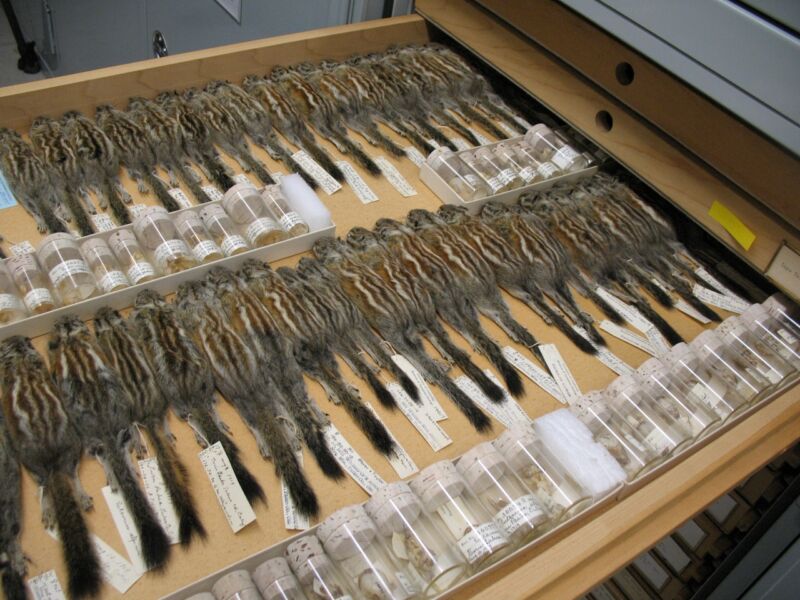
Enlarge / Alpine chipmunks collected by pioneering naturalist Joseph Grinnell in the early 20th century are still preserved at the Museum of Vertebrate Zoology at the University of California, Berkeley. Recently, geneticists used DNA extracted from them to trace how the chipmunks have evolved. Museum collections like this can give researchers at time machine to the past. (CC BY-NC 2.0) (credit: KQED Quest)
Natural history’s golden age, when Charles Darwin and like-minded scientists pondered connections between creatures and their environments, largely revolved around collecting stuff. Explorers fanned out across the world and picked up as many plants and animals as they could, drying them or stuffing them or storing them in alcohol in small glass jars. They carried them home to grand museums where the public might get a peek at them and be amazed.
These venerable collections can seem like relics today—musty storehouses, shrines to imperial plunder. But with billions of samples catalogued among them, museum collections are a treasure for modern evolutionary biologists studying DNA, RNA, proteins and other biomolecules. Sampling decades- or even centuries-old tissues allows scientists to capture snippets of genetic code from plants and animals—including extinct ones—and track molecular changes that took place long before biologists even understood what DNA was. Younger specimens are valuable too, providing a large sampling to help scientists compare traits within a species or between related ones.
All of this makes working with museum samples a tantalizing prospect for researchers, says Harvard evolutionary geneticist Daren Card, who has sequenced specimens from Australian museums for his own work on limb development in reptiles. Museum genomics is delivering crucial insights into evolutionary history, the effects of climate change and more, Card and colleagues write in the 2021 Annual Review of Genetics. Knowable spoke with Card about some of these projects—and some challenges the field faces.
Read 30 remaining paragraphs | Comments
